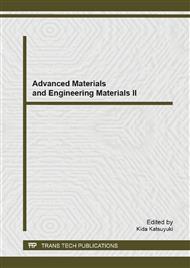p.435
p.439
p.444
p.453
p.457
p.464
p.468
p.474
p.479
Isothermal Transformation of Wustite for Low Carbon Micro-Alloyed Steel
Abstract:
The isothermal transformation of wustite (FeO) in the range of 650~350°C was studied using Gleeble 3500 thermal simulated test machine, electron back-scatter diffraction (EBSD) and scanning electron microscopy (SEM). A wustite layer was initially formed by oxidizing low carbon micro-alloyed steel in air at 880°C for 20 seconds. The layer was then isothermally annealed at 650-350°C in argon for up to 10000 seconds. The transformation of FeO was comprised by a proeutectoid reaction and a eutectoid reaction. FeO initially transformed to Fe3O4 by proeutecioid reaction and then the retained FeO transformed to lamellar mixture Fe+Fe3O4 by eutectoid reaction. The proeutectoid and eutectoid reactions both followed a C-curve trend and the nose temperatures were 475°C and 425°C, respectively. An isothermal transformation (IT) diagram was summarized based on our results.
Info:
Periodical:
Pages:
457-463
Citation:
Online since:
April 2013
Authors:
Keywords:
Price:
Сopyright:
© 2013 Trans Tech Publications Ltd. All Rights Reserved
Share:
Citation:


